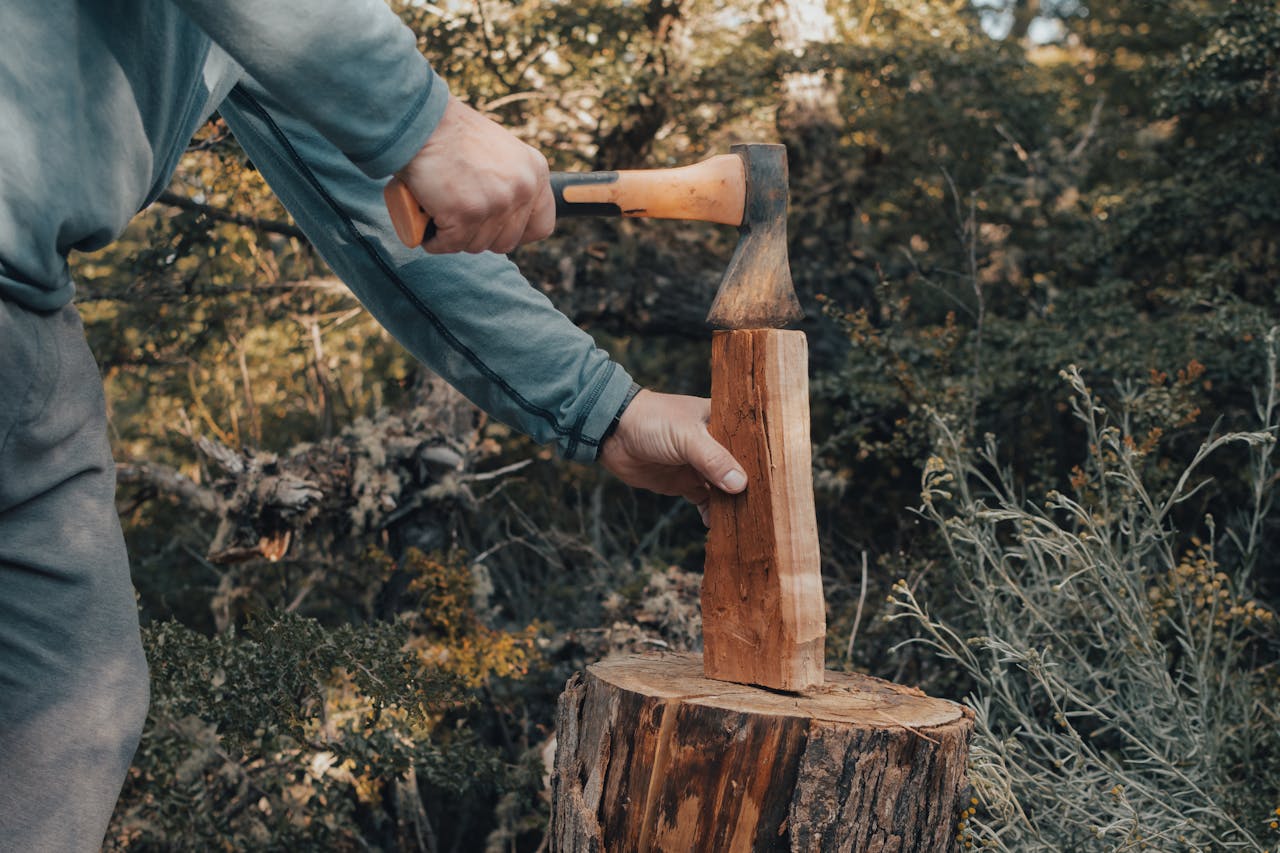There are lots of things to pack before a camping trip and one essential tool that every camper should have is a bushcraft axe. Whether you’re a novice or an experienced woodsman, mastering the use of this tool can enhance your outdoor experience significantly.
Let's see why every camper should have such an axe.
What is a Bushcraft Axe and What It Can Be Useful for You
A bushcraft axe is a small to medium-sized axe designed for outdoor tasks. Unlike heavy axes meant for logging, bushcraft axes are lightweight and easily maneuverable, making them perfect for tasks like building shelters, making firewood, and crafting tools.
Types of Bushcraft Axes
When it comes to bushcraft, the right axe can make a significant difference in your outdoor experience. Various types of axes are designed for specific tasks, each with unique characteristics. Here’s a breakdown of the most common types of bushcraft axes:
- Hatchet — a small, versatile axe ideal for one-handed use. Great for light chopping, splitting, and carving.
- Camp axe — larger than a hatchet but still portable, suitable for chopping wood for fires and basic campsite tasks.
- Felling axe — designed for cutting down trees, with a longer handle and a heavier head for more force.
- Splitting axe (or maul) — heavier and designed for splitting wood along the grain. Often features a wider blade.
- Tactical axe — features a robust design for survival situations. It may include additional tools like a hammer or pry bar.
- Double-headed axe — used for both felling and splitting, but less common in bushcraft due to weight.
- Survival axe — compact and multi-functional, often equipped with features like a saw or knife edge.
Versatility of Tasks Solved With the Bushcraft Axe
A bushcraft axe can handle numerous outdoor tasks, including:
- Chopping wood. Essential for gathering firewood.
- Splitting logs. Helps in preparing larger pieces of wood for cooking or heating.
- Carving. Useful for crafting tools, utensils, or shelters.
- Clearing brush. Keeps your campsite tidy and accessible.
Bushcraft Axe Safety Tips
Using an axe comes with inherent risks, so follow these safety tips:
- Wear protective gear. Use gloves and goggles to protect yourself.
- Check your surroundings. Always be aware of your environment when swinging a bushcraft axe.
- Keep the blade sharp. A dull axe can slip and cause accidents.
Using a bushcraft axe correctly can significantly enhance safety in the wild. Properly chopped wood ensures a stable fire, while clearing brush prevents accidents. According to the American Camp Association, having the right tools contributes to a safer camping experience.
Basic Skills and Techniques for Efficient Use of the Bushcraft Axe
Using an axe, whether for woodworking, bushcraft, or outdoor activities, requires attention to safety and technique. Proper handling ensures effective performance and minimizes the risk of injury. Here are essential techniques for handling an axe safely and effectively:
- Grip. Use a firm grip with both hands. Your dominant hand should be closer to the head of the axe, while your other hand should be further down the handle.
- Stance. Stand with your feet shoulder-width apart to maintain balance. Position your body to avoid the path of the axe swing.
- Swinging technique. Always swing the axe away from your body. Aim for a controlled swing to maintain accuracy.
Mastering the use of a bushcraft axe is essential for anyone looking to enhance their outdoor skills. Regular practice not only improves your proficiency but also builds confidence in handling this versatile tool. Here are some effective ways to practice your skills with a bushcraft axe:
- Start small. Begin with simple tasks like splitting kindling or carving small items.
- Join a workshop. Consider attending bushcraft or survival workshops to learn from experts.
- Practice regularly. The more you use your axe, the more comfortable you will become with it.
Mastering a bushcraft axe will help you develop essential outdoor skills such as:
- Woodcraft skills. Learn to create structures and tools.
- Firecraft skills. Efficiently gather and prepare firewood.
- Survival skills. Gain confidence in handling various survival situations.
Books and online resources can provide valuable knowledge on how to use a bushcraft axe. Some recommended titles include:
- "Bushcraft 101" by Dave Canterbury.
- "The Ultimate Bushcraft Survival Manual" by Blake Alma.
Conclusion
Using a bushcraft axe in the great outdoors can be a rewarding experience if done safely and skillfully. By understanding this tool, prioritizing safety, practicing proper techniques, and maintaining your axe, you can enhance your outdoor adventures. Always remember to respect nature and follow best practices to ensure your time spent in the wild is enjoyable and productive.







